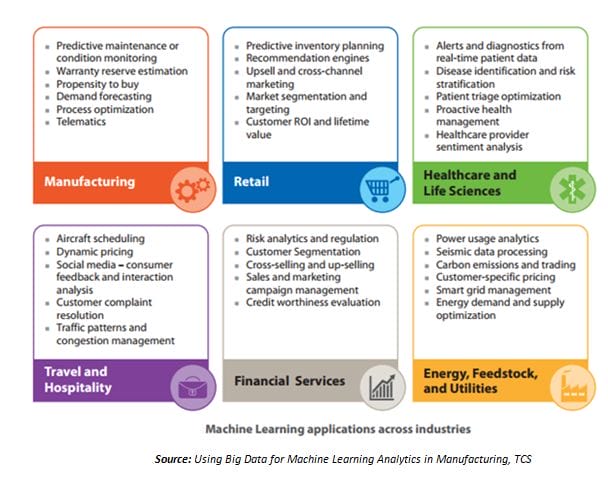“Machine learning is the ability to learn without being explicitly programmed”
– Arthur Samuel
Is this another buzz word in a world of continuous technology disruption?
Often we get lost in a maze of evolving technology trends, and tend to tune out and focus only on what is relevant to our immediate context. This is a perfectly understandable defense mechanism in a chaotic, and fast changing world.
But, this is the real deal. In this blog, I will present a broad overview of the field and outline the various scenarios for using machine learning to enhance software product innovation.
What is machine learning?
The pioneering American computer scientist Arthur Samuel defined Machine Learning as “the ability to learn without being explicitly programmed”, which effectively translates into: a machine (or a software program) that could learn from past results and reprogram itself to improve its performance in an iterative manner, and automatically on its own.
Machine Learning is the process of automating the creation of analytical models to enable algorithms to learn and improve continuously with the help of available data
Machine learning is already having a transformative impact, sometimes visibly, very often in quiet, unobtrusive, and invisible ways. Let’s look at some real-world examples of how machine learning is being used:
Facial recognition by Facebook: Many of you might be familiar with the facial tagging feature of Facebook, which used to prompt you to tag your friends, by clicking on their photo and adding a name manually. Now, thanks to a sophisticated face recognition algorithm, Facebook can automatically recognize a photo and tag people for you.
Google Translate is a machine translation service that is widely used for translating text from one language to the other. This service is based on the program’s ability to identify and detect patterns from the millions of documents that it translates, and make smart or intelligent choices to come up with a sensible translation. Google is extensively using machine learning algorithms to improve its array or products including Voice Search, Gmail smart reply, Google Photos etc.
Siri, Apple’s smart assistant is probably the best, and most widely known consumer application that is based on machine learning and AI. It uses natural language processing algorithms and voice recognition technologies to iteratively improve its capabilities. The latest version of Siri uses concepts from deep machine learning and advanced Neural networks to offer truly impressive voice recognition capabilities. Apple has quietly revolutionized various aspects of its core technology with advanced machine learning capabilities, which is covered extensively in this article by Steven Levy.
Amazon and Netflix recommendation engines: The hyper customized recommendation engines of both Amazon and Netflix are based on sophisticated usage of machine learning, leveraging huge amounts of data generated by millions of users. Amazon and Netflix had tremendous success in enhancing customer engagement and stickiness, and realized substantial revenue increases from personalization of customer experiences through recommendation engines.
As you can see from the above illustrations, giants of the technology industry are already in the vanguard of adopting machine learning as a critical component of their product innovation strategies.
Impact of IoT on machine Learning
The proliferation of smart and connected devices driven by IoT (Internet of Things) led to generation of tons of new data. In the recent past, most of the data generated through IoT was used by businesses to drive decision support systems based either on reactive or real-time analytics. With rapid advances in machine learning and sophisticated algorithms, businesses are increasingly using predictive analytics for smart decision support systems. Increased IoT adoption and advanced data analytics is leading to accelerated usage of machine learning across multiple industries, to support a diverse range of functions as shown below:

How can I use machine learning in my context?
Every technology disruption will have its own inflection point, at which the rate of adoption becomes exponential. It’s evident that we are at such an inflection point with machine learning. To leverage the potential of this disruptive technology paradigm, irrespective of the domain and function, one must focus on some critical aspects of machine learning as outlined below:
It’s all about Data: Without high-quality data, machine learning becomes moot. The first step is to ensure that data is properly captured, processed, and categorized from a multitude of sources.
Creation of models: in the form of an algorithm is extremely important. The right model, trained, tested, and calibrated with the right data can do wonders.
Appraise and improve: It is important to understand that this is an iterative process, and the model must be continuously evaluated, and improved.
Intelligent usage of machine learning can greatly enhance the quality of products and services across industries, and can be a differentiating factor for product innovation.




